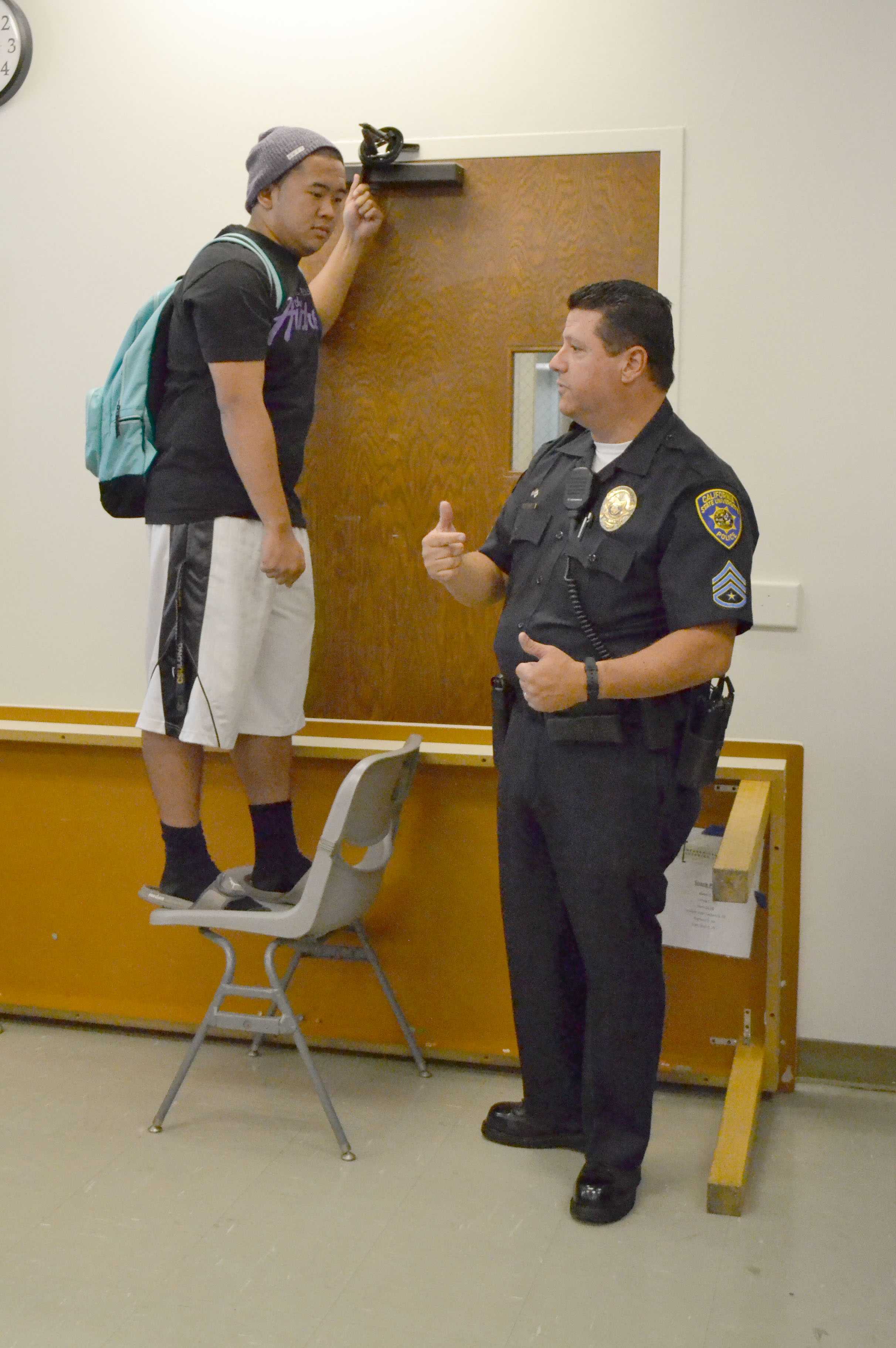Room 202 in the Vivian Engineering Center was on lockdown for 10 minutes Wednesday as students barricaded the doors with belts and large desks.
The students were participating in the “Active Shooter Classroom Defense Exercise,” which featured four 30-minute presentations on recent public shootings, steps on what to do when in an active shooter incident, a short video replicating a real-life scenario and an active shooter demonstration in the classroom.
“Safety on campus is the entire community’s responsibility,” said University Police Sgt. Keith Caires, the active shooter instructor who led the presentation.
Caires said that Cal State Long Beach has the reputation of being one of the safest campuses in California and that the active shooter presentation should reinforce the positive reputation CSULB currently holds.
There were roughly 40 attendees at each presentation, including students, staff and faculty.
Mary Caputi, a political science professor, said she had her class attend the session to inform her freshmen students on active shooter awareness and learn the skills for herself as a professor.
“I wanted to learn for myself,” Caputi said. “We need a plan in place because sealing off the entire university is unrealistic.”
A number of Caputi’s students said they thought the active shooter demonstration provided important information, as new students at CSULB may still have little knowledge of campus surroundings.
“In a crisis situation, you get nervous and panic,” freshman Toria Denofrio said. “The things I learn here will stay in the back of my mind, and the steps will keep me safe.”
During the presentation, Caires enforced a three-option system to stay safe in the event of a crisis situation: run, hide or fight.
Run, he said, is an option for students who can easily and discreetly leave the hostile situation. Caires said this is an independent decision, and each individual cannot be accountable for others who may want to stay behind.
Hide, the second option, refers to when one or more students are confined to a room with the active shooter nearby.
Caires demonstrated a number of steps that people should follow if they are trapped and must hide inside a room. The steps include turning off the light and sealing and barricading all doors and windows with large objects, such as desks. People in the room should then hold the desks up by propping their backs against the barricade, Caires said.
The people trapped should also silence all phones and not call the police unless it’s to offer a useful tip on the active shooter’s location, Caires said.
The last option Caires discussed, fight, can be used as a last measure for safety. He said that one should search his or her surroundings for objects that can be used as weapons, such as power cords, pepper spray, fire extinguishers and electrical cords.
In order to fight for survival, the individual or group must “combat anxiety and commit to survival,” Caires said.
Caires’ live demonstration also saw participants tilt tables over and barricade the door in a “T” formation so two desks were held against each other. Belts were tied around door handles and hinges in a strong knot, which would prevent an active shooter from entering the room.
According to Caires, the active shooter would be aware of his or her short time limit until police arrive, so the shooter would not waste much time trying to open a door.
“Be aware and be prepared,” Caires said.
The video from the active shooter demonstration is available at http://daf.csulb.edu/offices/ppfm/police/as-video.html.




